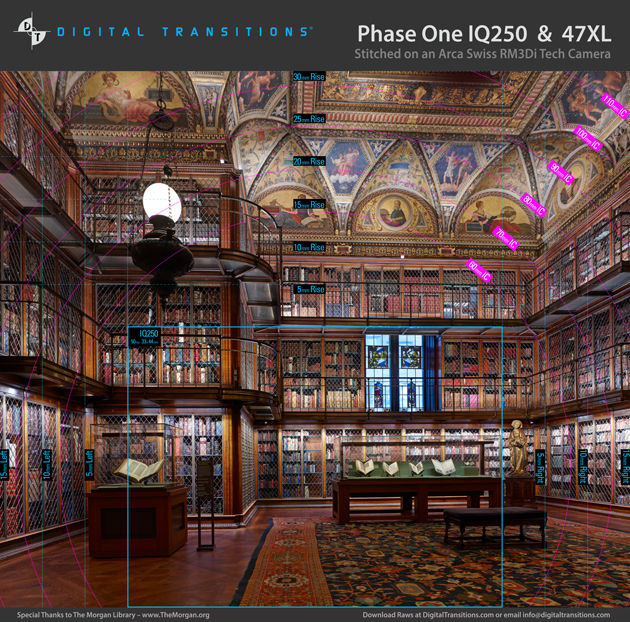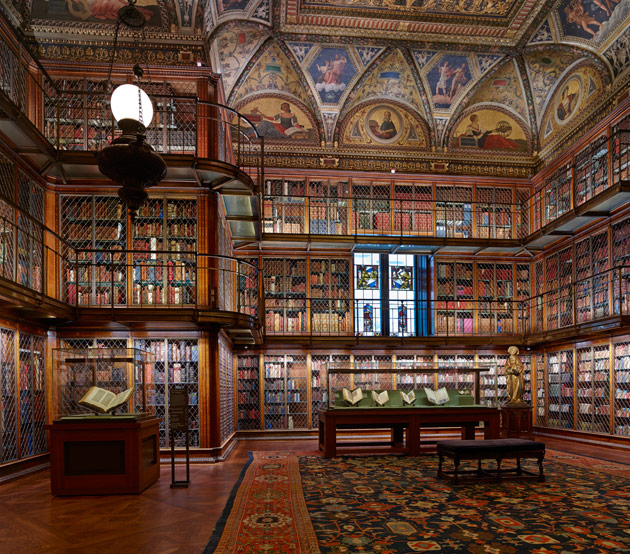Digital Transitions, Gear Testing
Phase One IQ250 Tech Cam Testing
Tech Camera Users Unite
The release of the Phase One IQ250 has excited many tech camera users for a few reasons
- Live View: Since tech cameras don’t have viewfinders; the IQ250’s fast live view promises much easier focusing and composition.
- Dynamic Range: The ultra clean shadows and great highlight recovery of the IQ250 will scenes with challenging and uncontrollable light.
- High ISO: The ability to shoot at higher ISOs can be useful to stop movement blur, for instance on leaves blowing in the wind.
- Long Exposure: Like the IQ260 the IQ250 can do an hour long exposure, but unlike the IQ260 no special mode is required.
- Battery Life: Especially when using Live View on the LCD the battery life of the IQ250 is significantly improved compared to the other IQ2 backs.
But there has been, until now, one looming question – how will the micro-lenses of the IQ250 interact with the wide-angle technical lenses used on these bodies? Digital Transitions has invested heavily in real world testing to help answer that question. Doing so required a full day of shooting and four full days of processing and image evaluation. In this article we provide a short summary of that testing. Please contact us to discuss any of these results in more detail.
Test Parameters
Intention: The intention for the test, which motivated all test parameter decisions, was to provide as real world of a test as could be achieved.
Scene: We selected a scene with “non ideal” lighting. Our friends at the Morgan Library offered the beautiful “Mr. Morgan’s Library” room at their museum. It was quite dim, making for long exposures, especially with the 35XL’s center filter in place, and had lots of hot spots including books being illuminated overhead by harsh in-shelving lighting. It also features a lot of dark and difficult subject matter. The scene also has many bright colors, useful for evaluating the loss of color fidelity in areas strongly effected by lens cast.
Aperture: f/9 was used on all lenses other than the 60XL which was used at f/11 due to DOF requirements.
Support: A heavy tripod and Arca Swiss ball-head was used for support.
LCC: For the LCC an official Phase One LCC matte-matte LCC panel was used with strobe. LCC’s were captured after the fact to speed the capture process. All composite images were processed with both color cast removed and uniform light set to 100%.
Center Filter: A center filter was used on the 35XL. No other lenses used center filters. In reviewing the completed files we regret we did not use a center filter with the 32HR and 60XL as it may have extended usability of these lenses, especially on the IQ250.
Body: An Arca Swiss RM3Di was selected for it’s movement range (up to 30mm of rise) and it’s precise helical focusing ring, which we found made a good match for focusing using the IQ250 live view.
Processing/Color: Processing of the composite files was done in Capture One v7. White balance, which is hard to determine in a mixed-light moody scene like this was set roughly during processing to attempt to match the several backs and lenses in the same ballpark – however, this is an imperfect process especially as some of the lens+back combinations had uncorrectable color cast. We do not recommend this test be used to evaluate the subtle differences in color between these three backs (we will have more testing specific to color coming soon). Some of the composites were processed using “OE” (overexposure) image with their exposures brought down in processing (please see raws if you wish to evaluate the nuances of grain/noise/DR between each back). Other process settings included:
- Shadow Recovery: 30
- Highlight Recovery: 20
- Contrast: 8
- Noise Reduction: Default
Distortion Correction: There are several tools which correct for the distortion of the Rodenstock lenses. We did not apply any correction to this distortion so it could be included when clients are choosing between lenses for a given digital back.
Summary of Findings
The IQ250 can absolutely be used on a technical camera – with some limitations. For most of the tested lenses the usable image circle was approximately the same as with an IQ280. Used within these image circles all three backs produced excellent image quality.
The exception was the Schneider 60XL which caused strange artifacts on the IQ250 when strongly shifted. We will be retesting the 60XL in the coming month with a Center Filter to see whether counteracting the severe falloff of this lens helps it’s usable image circle with the IQ250.
It seems clear that most IQ250 tech camera users will be best off using Rodenstock lenses throughout the wide-to-normal range, a recommendation which began with the IQ280. But with these Rodenstock lenses even strong movements can be used with good results.
It also seems that the IQ250 is more prone to light falloff than previous backs, meaning that customers who previously did not use optical center filters may wish to add optical center filters to their toolkits. On the other hand the IQ250 is able to recover very deep shadows more cleanly than previous backs, especially on multi-second exposures, which lessens the need for optical center filters. The fact the IQ250 has a native ISO of 100 rather than the native ISO of 35 or 50 of the IQ280 and IQ250.
Users choosing between an IQ250 and other Phase One digital backs will have to consider the trade off in compatibility with Schneider wide-angle lenses, range of avilable movement, sensor size, resolution, and speed/quality of live view. We recommend clients who are on the fence do their own hands-on evaluation and testing; we are glad to arrange for demos in our studio, at the client’s location, via our Remote Demo Center, or via a rental (with cost counted towards purchase). Contact us to arrange your own testing.
Other Interesting Findings
Orientation Matters – We found that the orientation of the sensor mattered a lot regarding the color cast produced by any given area of the image circle. At 30mm of rise and 15mm of shift on the 60XL for instance, much better results were found by turning the back either 180 degrees (resulting in the same image but with less severe color cast) or 90 degrees (resulting in a vertical). We did incorporate this fact into our image circle findings below because we did not feel rotating the back mid-stitch was a practical approach, but for some applications this knowledge may come in handy. The effect of color cast is clearly not symetrical.
Color Fidelity – As with the IQ280 we found that extreme movements with Schneider wides often led to areas of color cast that were so extreme that the LCC routine could not fully correct them, leading to areas of lower saturation and color fidelity. When viewing the composites and raw files look for areas of repeating color (e.g. the red decorations on the roof) where you can determine where color fidelity starts to suffer.
DT Certified Image Circles
Below is our best assessment of how much of the image circle of each of the tested lenses can be used for color, and black and white images (if a part of the image was sharp but showed poor color saturation/fidelity it only qualified as usable for black and white imagery). In the final column is the number the manufacturer claims in it’s marketing materials. Historically Schneider has been a bit generous in their assessment of their image circles, and Rodenstock has been a bit conservative. The below numbers should help to even those biases out by evaluating the two brands of lenses using the same criterium.
These are approximate numbers and will vary slightly based on your requirements, and the orientation of the sensor. We also expect the three Schneider lenses would have done better at f/11.5 or f/16 regarding even sharpness across the image circle. We consciously selected f/9 for most of the lenses due to the dim lighting of this room – an artifact again, of our desire to make this test a real-world torture test.
Please feel free to download our composites or raw files to make your own evaluations, or contact us to do your own testing. Also feel free to share your opinions with dep@digitaltransitions.com – these charts are works-in-progress and we’re interested in your opinions as well. Our hope is that in the very least they provide more useful information than the marketing image-circle specification given by Rodenstock and Schneider.
Note: We are planning an update to our dynamic Image Circle Visualizer Tool to incorporate these numbers, but that will not likely be public for several weeks.
Effective/Usable Image Circles for Color Images:
| f/stop | IQ250 | IQ260 | IQ280 | Mnfr Claim | |
| 32HR | f/9 | 70mm | 85mm | 75mm | 90mm |
| 35XL | f/9 | 50mm | 70mm | 50mm | 90mm |
| 40HR | f/9 | 80mm | 95mm | 85mm | 90mm |
| 47XL | f/9 | 80mm | Untested | Untested | 113mm |
| 60XL | f/11 | 70mm | 120mm | 110mm | 120mm |
Effective/Usable Image Circles for B+W Images:
| f/stop | IQ250 | IQ260 | IQ280 | Mnfr Claim | |
| 32HR | f/9 | 95mm | 95mm | 90mm | 90mm |
| 35XL | f/9 | 60mm | 70mm | 60mm | 90mm |
| 40HR | f/9 | 95mm | 100mm | 95mm | 90mm |
| 47XL | f/9 | 85mm | Untested | Untested | 113mm |
| 60XL | f/11 | 75mm | 120mm | 110mm | 120mm |

A web-sized version of the Image Circle Composite Guide for the IQ250 and 47XL
Image Circle Composite Guides
The below composites are stitches of four or six overlapping captures, as processed in Capture One and stitched using Photoshops PhotoMerge algorithm, then saved as a JPG. In each case this amount of stitching was enough to reach the edge of the usable image circle for all three backs. These composites should not be used to judge absolute detail or noise as they are, for practical reasons, saved as JPGs and also include image adjustments like highlight and shadow recovery and noise reduction – download the raws for evaluation of absolute image quality.
NOTE: When clicking a link below, if you’re not logged into our website, you’ll be taken to a page to log in with your email address. The download should begin once you have entered your information and clicked “download file”. If the files prove too large for you to download please contact us for alternative means to receive them.
| IQ250 | IQ260 | IQ280 |
Raw Files (EIP format for use in Capture One 7.2+)
Request Raw Files
Previously we had provided direct download to the public ofthese files, but we found the load on our server (of providing 17gb of downloads without limitation) was too high. For raw files from the 35XL, 40HR, 47XL, 60XL, and 28LS on the IQ250, IQ260, and IQ280 please Contact Us for options (all of which are provided at no cost).
Take a Tour of These Files
Feeling lost? Don’t feel badly! All together there are 262 files in this test. Our clients are welcome to request a 1v1 guided tour of these files using our Remote Demo Center. We’ve had our noses deep in these files for many (many) hours. We can help point out the strong and weak spots. Just contact your sales rep, or contact us for info on how you can become a DT Client.
*OE = Overexposure

